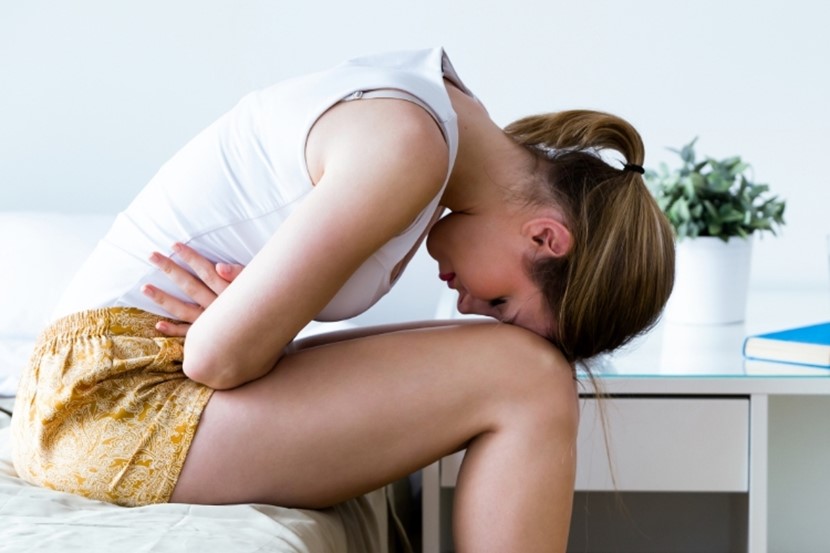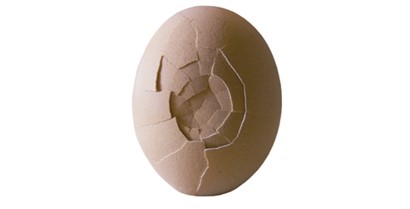Understanding endometriosis

Do you have extremely painful, heavy periods that are a trial to get through every month? Do you bleed in between your periods? These are some of the symptoms of a medical condition known as endometriosis, explains Dr Anil Sharma.
Endometriosis is a common condition where the lining (endometrium) of the uterus also exists outside the uterus, in the pelvis, and on the structures around the outside of the uterus, such as the ovaries and the bowel. It commonly causes pain and is linked to infertility. However, some women with even severe types of endometriosis have no symptoms at all. Up to 10% of women aged 15-45 years have endometriosis. In women with infertility, this figure rises to about 25-35%.
It used to be said that women who had already had children didn't get endometriosis, and that the disease is more common in "high-flying", professional women. It was also said that pregnancy "burns it out forever". Neither of these statements are true.
What is endometriosis?
The most common place to find endometriosis is on the ovary (on its surface, or inside it as a cyst or "endometrioma"), on the uterosacral ligaments that support the uterus, on the thin lining wall of the pelvis, on the Fallopian tubes, on the surface of or inside the bladder, in the area between the vagina and rectum (back passage), and in scars from old surgeries.
When a woman with endometriosis has her period, not only does the "normal" lining of her uterus shed as it is supposed to, but this extraneous lining tissue also bleeds. This can lead to inflammation and scarring. The symptoms, including pain, occur due to this, and later in the natural history of the condition, they can even occur when a woman isn't in the "period-part" of her menstrual cycle.
What causes endometriosis?
There are many theories. It is known that a small amount of menstrual blood leaks the "wrong way" during a period, i.e. out of the tubes and into the pelvis. Though many researchers have suggested this as a cause (that the tiny bits of normal endometrium or womb lining implant in the pelvis), it is probably not the only explanation, as this retrograde menstruation occurs in most women.
When the miracle of the formation of our bodies from just two cells occurs, clusters of amazing cells that have the potential to become any type of tissue form: For example, the female genital tract. Another theory (the metaplasia theory) says that some of these cells left in the pelvis retain the ability to change in later life to any cell type, and they do - i.e. into endometrium - except in the wrong place.
Another explanation, the vascular theory, suggests that endometrium gets to distant sites from the inside of the womb by getting into blood vessels and travelling there. It is likely that the true causes are a mixture of the above, and that a genetic or familial component also exists.
What problems can it cause?
The most common symptoms involve pain. Pain due to endometriosis can be a dull ache located over the lower tummy, or severe and more localised, e.g. in the rectum. Some women have very widespread and extensive endometriosis, and have minimal pain. Others have just a few spots of endo, but have severe pain. Painful periods are often the first sign of endometriosis. Pain during intercourse is another symptom, usually felt deep in the pelvis and often associated with a pelvic ache after sex.
Infertility associated with endo is difficult to explain, but it is felt that the pelvic inflammation caused by the disease somehow affects the fertilisation process between the sperm and the egg. If treatment for endometriosis does not increase fertility for women who have difficulty getting pregnant, they can be referred to fertility clinics by their doctors for consideration for in-vitro fertilisation.
Other symptoms of endometriosis include painful bowel movements, bloating, constipation, and painful and frequent urination. There are many other symptoms that have been attributed to the disease.
Diagnosis of endometriosis
A pelvic examination can sometimes be useful in diagnosis, e.g. findings of tenderness and scarring. Ultrasound scans are good at excluding ovarian endometriotic cysts (endometriomas), but a diagnostic laparoscopy is needed to confirm endometriosis. This involves a passing a small telescope (under a general anaesthetic) through the belly button to view the pelvis.
At laparoscopy, the appearance of endometriosis is widely variable. Since the 1920s, it has been known to look very different between patients. It can look like purple or black powder-burn spots; red, blue, white, jelly-like or non-pigmented lesions, scarring and ovarian cysts. In more advanced cases, there may be scar tissue, adhesions causing structures to stick to each other, e.g. the bowel to the back of the uterus. An experienced surgeon usually undertakes treatment of endo at the time of diagnosis, but more severe disease will need a second surgery with more time and possibly the involvement of a bowel surgeon.
Other treatments
Many other therapies have been advocated in the many good self-help books available on the subject. These include changes to the diet to try and reduce estrogen levels, increased fibre, and more Omega-3s. What is eminently sensible is that women with endometriosis look at changing their lifestyle and diet factors and assess what difference this makes to their disease. Other advocated alternative health modalities include acupuncture, herbal treatments and homeopathy.
While I have an open mind to alternative managements of disease, it is not my place to suggest global major dietary and lifestyle changes. However, I am always ready to advocate the good that comes from more exercise and less smoking.
Ask for help
Endometriosis is a difficult and enigmatic condition to manage. The diagnosis is frequently missed or ignored for months, even years. Ask for help if you have painful periods or pelvic pain. The best overall treatment is surgical, but even in good hands, the effectiveness is around 80%, and five-year recurrence around 30%. Medical treatment with tablets or the Pill is acceptable (if it works), as long as ovarian cysts and significant scarring has been excluded by examination and ultrasound scan.
Sometimes other problems cause pelvic pain, including ovarian cysts and idiopathic causes (where doctors cannot find an answer). However, with effective management, including possible use of lifestyle changes and alternative therapies as well, a great improvement in quality of life can lead to the disease not taking over a woman's life.
Managing endometriosis
There are many options available, tailor-made for individuals and to the extent of their symptoms and disease. These vary between doing nothing at all and extensive surgery. Other options include managing symptoms, medical treatments to try and shrink the disease, and moderate to major surgery.
Symptom management: Management of pain usually involves anti-inflammatory painkillers, e.g. Mefenamic Acid (Ponstan) and other types, from paracetamol to morphine.
Medical treatments: Treatment of endometriosis with drugs plays an important part in managing symptoms. However, it does not improve the chances for pregnancy. Indeed, some treatments are also hormonal contraceptives. Medical treatment suppresses endometriosis rather than removing it, and is effective only for management of symptoms, with active endometriosis returning gradually over 12-24 months after stopping it. Not everyone responds to medical treatment.
Contraceptive pill: The Pill is one of the most common treatments for endo, and is a good choice for young women with mild disease who also require effective contraception. The hormones effectively take over the cycle and shrink endometriosis deposits. If used continuously, many gynaecologists advise a week's break after every three or four packets of active tablets.
Progestagens: Progestagens such as Provera are commonly used as a medical treatment and are effective in many cases, but do have side effects, which can be limiting. These can include irregular bleeding, breakthrough bleeding, weight gain, breast tenderness, water retention, and, rarely, depression.
GnRH agonists: These drugs had initial major promise and work by blocking hormone receptor sites. This effectively stops the ovaries from working, thereby leading to shrinkage of endometriosis. Such a drastic drug works very well and relieves symptoms in 80-90%. Unfortunately, they also cause hot flushes, reduced sex drive, vaginal dryness, emotional symptoms, depression, and headaches. Osteoporosis is also a side-effect, but this reverses after stopping treatment. Despite using some "add-back" estrogen to reduce side effects, the drugs have limited use as temporary suppressants, but are useful for patients who cannot have surgery, or sometimes as an adjunct to surgery.
Surgical treatments: Conservative surgery aims to destroy endometriosis to return the pelvic anatomy and appearance to as close to normal as possible without removing any organs or structures. Radical surgery often means doing a hysterectomy with removal of both ovaries, and is reserved for women who have completed their fertility requirements or given up. They usually have very severe symptoms, and often have not responded to medical treatment or conservative operations. Sometimes, if there are other reasons (e.g. heavy periods) to carry out a hysterectomy, it is done earlier than this. Most times, conservative surgery is carried out through keyholes (laparoscopically) using a small device with an electric current to cut out endometriosis. Hospital stay is short (one to two nights) and recovery quick (one to two weeks) compared to open surgery. Improvement in pain symptoms following this type of surgery can be expected in more than 80% of cases, with an increase in pregnancy rate for those women with infertility as well. This increased pregnancy rate varies between 15% and 60%, depending on severity of endometriosis found.
Levonorgestrel intra-uterine device: This is often used as an adjunctive treatment during surgery for endometriosis and can reduce the five-year recurrence rate for endometriosis from around one in three to around one in six. It does have side effects in some women and its use is carefully discussed.
Open surgery: Hysterectomy is often done as an open procedure rather than laparoscopically, and is an end-stage treatment for women who have completed their family and where endometriosis is severe. The pros and cons of removal of the ovaries needs careful discussion, as although the recurrence rate of the disease is more common if they are left behind, the modern-day known risks of hormone replacement therapy often preclude its use.
Recurrence of endo after surgery: Recurrence of endometriosis has been estimated to be 10% per year by one author. Another study found it to recur in 30-40% of women within five years after conservative surgery.
|
Dr Anil Sharma is a specialist doctor in gynaecology and maternity. He is very involved in lectures and updates for family doctors and frequently takes part in debate regarding women's health and maternity for print media and radio. He believes that anxiety and fear can be conquered by knowledge. Anil emigrated to New Zealand from the UK in 2001 with his wife Rachel, and he tries hard to be a hands-on and fun father (putting golf and cars on hold for the time being) to their three daughters, who were all born here. For further information about Anil's practice, visit www.dranilsharma.co.nz |

AS FEATURED IN ISSUE 5 OF OHbaby! MAGAZINE. CHECK OUT OTHER ARTICLES IN THIS ISSUE BELOW

















